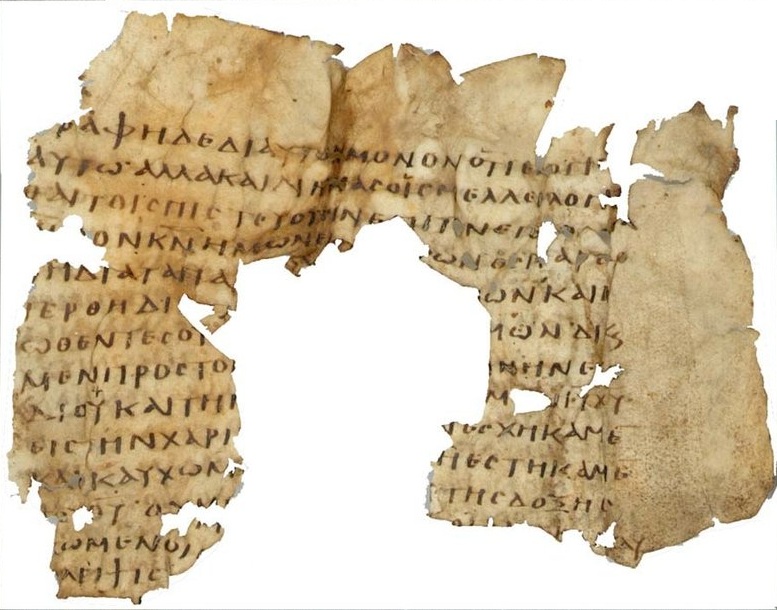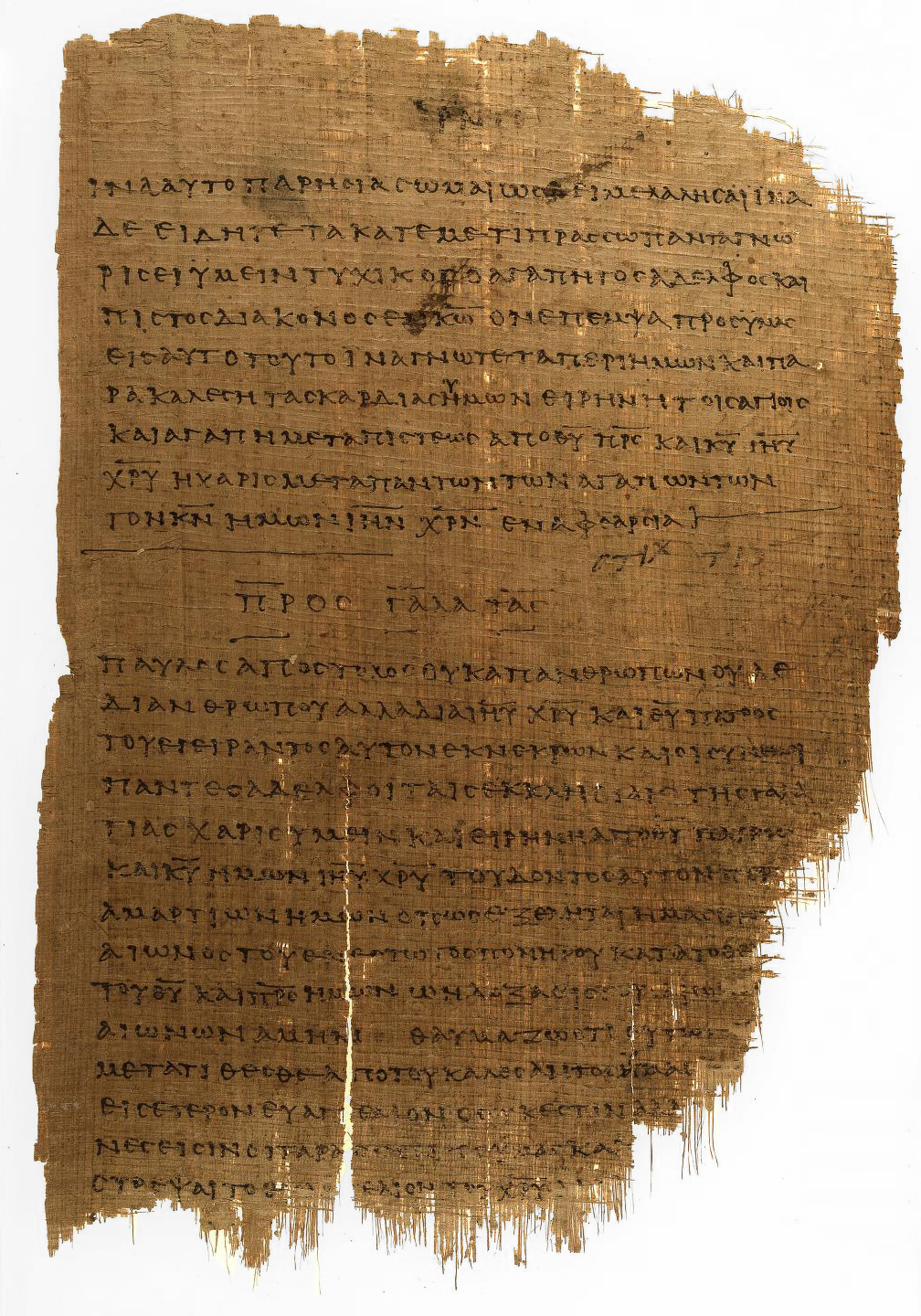|
2 Corinthians
The Second Epistle to the Corinthians is a Pauline epistle of the New Testament of the Christian Bible. The epistle is attributed to Paul the Apostle and a co-author named Timothy, and is addressed to the church in Corinth and Christians in the surrounding province of Achaea, in modern-day Greece. According to Jerome, Titus was the amanuensis of this epistle. Composition While there is little doubt among scholars that Paul is the author, there is discussion over whether the Epistle was originally one letter or composed from two or more of Paul's letters. Although the New Testament contains only two letters to the Corinthian church, the evidence from the letters themselves is that he wrote at least four and the church replied at least once: # 1 Corinthians 5:9 ("''I wrote unto you in an epistle not to company with fornicators''", KJV) refers to an early letter, sometimes called the "warning letter" or the "previous letter." # 1 Corinthians # The Severe Letter: Paul refers to an ... [...More Info...] [...Related Items...] OR: [Wikipedia] [Google] [Baidu] |
Pauline Epistle
The Pauline epistles, also known as Epistles of Paul or Letters of Paul, are the thirteen books of the New Testament attributed to Paul the Apostle, although the authorship of some is in dispute. Among these epistles are some of the earliest extant Christian documents. They provide an insight into the beliefs and controversies of early Christianity. As part of the canon of the New Testament, they are foundational texts for both Christian theology and ethics. Most scholars believe that Paul actually wrote seven of the Pauline epistles ( Galatians, Romans, 1 Corinthians, 2 Corinthians, Philemon, Philippians, 1 Thessalonians), while three of the epistles in Paul's name are widely seen as pseudepigraphic (First Timothy, Second Timothy, and Titus).New Testament Letter Structure fro [...More Info...] [...Related Items...] OR: [Wikipedia] [Google] [Baidu] |
Epistle To The Romans
The Epistle to the Romans is the sixth book in the New Testament, and the longest of the thirteen Pauline epistles. Biblical scholars agree that it was composed by Paul the Apostle to explain that salvation is offered through the gospel of Jesus Christ. Romans was likely written while Paul was staying in the house of Gaius in Corinth. The epistle was probably transcribed by Paul's amanuensis Tertius and is dated AD late 55 to early 57. Consisting of 16 chapters, versions with only the first 14 or 15 chapters circulated early. Some of these recensions lacked all reference to the original audience of Christians in Rome making it very general in nature. Other textual variants include subscripts explicitly mentioning Corinth as the place of composition and name Phoebe, a deacon of the church in Cenchreae, as the messenger who took the epistle to Rome. Prior to composing the epistle, Paul had evangelized the areas surrounding the Aegean Sea and was eager to take the gospel fart ... [...More Info...] [...Related Items...] OR: [Wikipedia] [Google] [Baidu] |
Come-outer
Come-outer is a phrase coined in the 1830s which denotes a person who withdraws from an established organization, or one who advocates political reform. History The term was first applied during the Second Great Awakening to a small group of American abolitionists who dissented from religious orthodoxy, who withdrew from a number of established churches because the churches were not progressive enough on the issue of abolition. A come-outer would not join a church which held a neutral position on the issue of slavery, and he would not vote, or run for office, or otherwise take part in a government that let slavery happen. The phrase was derived from the Bible verse, II Corinthians 6:17 which read "Wherefore come out from among them, and be ye separate, saith the Lord, and touch not the unclean thing; and I will receive you." Garrisonian anti-institutionalism William Lloyd Garrison was an influential Boston abolitionist who founded the New England Anti-Slavery Society and the America ... [...More Info...] [...Related Items...] OR: [Wikipedia] [Google] [Baidu] |
Jerusalem
Jerusalem (; he, יְרוּשָׁלַיִם ; ar, القُدس ) (combining the Biblical and common usage Arabic names); grc, Ἱερουσαλήμ/Ἰεροσόλυμα, Hierousalḗm/Hierosóluma; hy, Երուսաղեմ, Erusałēm. is a city in Western Asia. Situated on a plateau in the Judaean Mountains between the Mediterranean Sea, Mediterranean and the Dead Sea, it is one of the List of oldest continuously inhabited cities, oldest cities in the world and is considered to be a holy city for the three major Abrahamic religions: Judaism, Christianity, and Islam. Both Israelis and Palestinians claim Jerusalem as their Capital city, capital, as Israel maintains its primary governmental institutions there and the State of Palestine ultimately foresees it as its seat of power. Because of this dispute, Status of Jerusalem, neither claim is widely recognized internationally. Throughout History of Jerusalem, its long history, Jerusalem has been destroyed at least twice, Sie ... [...More Info...] [...Related Items...] OR: [Wikipedia] [Google] [Baidu] |
Epistle To The Galatians
The Epistle to the Galatians is the ninth book of the New Testament. It is a letter from Paul the Apostle to a number of Early Christian communities in Galatia. Scholars have suggested that this is either the Roman province of Galatia in southern Anatolia, or a large region defined by an ethnic group of Celtic people in central Anatolia. The language the letter was originally written in was Koine Greek and later translated into other languages. In this letter, Paul is principally concerned with the controversy surrounding gentile Christians and the Mosaic Law during the Apostolic Age. Paul argues that the gentile Galatians do not need to adhere to the tenets of the Mosaic Law, particularly religious male circumcision, by contextualizing the role of the law in light of the revelation of Christ. The Epistle to the Galatians has exerted enormous influence on the history of Christianity, the development of Christian theology, and the study of the Apostle Paul. The central dispute ... [...More Info...] [...Related Items...] OR: [Wikipedia] [Google] [Baidu] |
Twelve Apostles
In Christian theology and ecclesiology, the apostles, particularly the Twelve Apostles (also known as the Twelve Disciples or simply the Twelve), were the primary disciples of Jesus according to the New Testament. During the life and ministry of Jesus in the 1st century AD, the apostles were his closest followers and became the primary teachers of the gospel message of Jesus. There is also an Eastern Christian tradition derived from the Gospel of Luke of there having been as many as seventy apostles during the time of Jesus' ministry. The commissioning of the Twelve Apostles during the ministry of Jesus is described in the Synoptic Gospels. After his resurrection, Jesus sent eleven of them (as Judas Iscariot by then had died) by the Great Commission to spread his teachings to all nations. This event has been called the dispersion of the Apostles. In the Pauline epistles, Paul, although not one of the original twelve, described himself as an apostle, saying he was call ... [...More Info...] [...Related Items...] OR: [Wikipedia] [Google] [Baidu] |
Roman Corinth
Corinth (American English: ) (British English: ) ; grc-gre, Κόρινθος ; grc, label=Doric Greek, Ϙόρινθος; la, label=Latin, Corinthus) was a city-state (''polis'') on the Isthmus of Corinth, the narrow stretch of land that joins the Peloponnese to the mainland of Greece, roughly halfway between Athens and Sparta. The modern city of Corinth is located approximately northeast of the ancient ruins. Since 1896, systematic archaeological investigations of the Corinth Excavations by the American School of Classical Studies at Athens have revealed large parts of the ancient city, and recent excavations conducted by the Greek Ministry of Culture have brought to light important new facets of antiquity. For Christians, Corinth is well known from the two letters of Saint Paul in the New Testament, First and Second Corinthians. Corinth is also mentioned in the Acts of the Apostles as part of Paul the Apostle's missionary travels. In addition, the second book of Pausani ... [...More Info...] [...Related Items...] OR: [Wikipedia] [Google] [Baidu] |
Jesus
Jesus, likely from he, יֵשׁוּעַ, translit=Yēšūaʿ, label= Hebrew/ Aramaic ( AD 30 or 33), also referred to as Jesus Christ or Jesus of Nazareth (among other names and titles), was a first-century Jewish preacher and religious leader; he is the central figure of Christianity, the world's largest religion. Most Christians believe he is the incarnation of God the Son and the awaited Messiah (the Christ) prophesied in the Hebrew Bible. Virtually all modern scholars of antiquity agree that Jesus existed historically. Research into the historical Jesus has yielded some uncertainty on the historical reliability of the Gospels and on how closely the Jesus portrayed in the New Testament reflects the historical Jesus, as the only detailed records of Jesus' life are contained in the Gospels. Jesus was a Galilean Jew who was circumcised, was baptized by John the Baptist, began his own ministry and was often referred to as "rabbi". Jesus debated with fellow ... [...More Info...] [...Related Items...] OR: [Wikipedia] [Google] [Baidu] |
Christ
Jesus, likely from he, יֵשׁוּעַ, translit=Yēšūaʿ, label=Hebrew/Aramaic ( AD 30 or 33), also referred to as Jesus Christ or Jesus of Nazareth (among other names and titles), was a first-century Jewish preacher and religious leader; he is the central figure of Christianity, the world's largest religion. Most Christians believe he is the incarnation of God the Son and the awaited Messiah (the Christ) prophesied in the Hebrew Bible. Virtually all modern scholars of antiquity agree that Jesus existed historically. Research into the historical Jesus has yielded some uncertainty on the historical reliability of the Gospels and on how closely the Jesus portrayed in the New Testament reflects the historical Jesus, as the only detailed records of Jesus' life are contained in the Gospels. Jesus was a Galilean Jew who was circumcised, was baptized by John the Baptist, began his own ministry and was often referred to as "rabbi". Jesus debated with fellow Jews ... [...More Info...] [...Related Items...] OR: [Wikipedia] [Google] [Baidu] |
Easton's Bible Dictionary
The ''Illustrated Bible Dictionary'', better known as ''Easton's Bible Dictionary'', is a reference work on topics related to the Christian Bible, compiled by Matthew George Easton. The first edition was published in 1893, and a revised edition was published the following year. The most popular edition, however, was the third, published by Thomas Nelson in 1897, three years after Easton's death. The last contains nearly 4,000 entries relating to the Bible. Many of the entries in ''Easton's'' are encyclopedic in nature, although there are also short dictionary-type entries. Because of its age, it is now a public domain resource. See also * Bauer lexicon ''Bauer's Lexicon'' (also ''Bauer Lexicon'', ''Bauer's Greek Lexicon'', and ''Bauer, Arndt and Gingrich'') is among the most highly respected dictionaries of Biblical Greek. The producers of the German forerunner are Erwin Preuschen and Walter Baue ... * '' Smith's Bible Dictionary'', another popular 19th-century Bible dic ... [...More Info...] [...Related Items...] OR: [Wikipedia] [Google] [Baidu] |
Thessalonica
Thessaloniki (; el, Θεσσαλονίκη, , also known as Thessalonica (), Saloniki, or Salonica (), is the second-largest city in Greece, with over one million inhabitants in its metropolitan area, and the capital of the geographic region of Macedonia, the administrative region of Central Macedonia and the Decentralized Administration of Macedonia and Thrace. It is also known in Greek as (), literally "the co-capital", a reference to its historical status as the () or "co-reigning" city of the Byzantine Empire alongside Constantinople. Thessaloniki is located on the Thermaic Gulf, at the northwest corner of the Aegean Sea. It is bounded on the west by the delta of the Axios. The municipality of Thessaloniki, the historical center, had a population of 317,778 in 2021, while the Thessaloniki metropolitan area had 1,091,424 inhabitants in 2021. It is Greece's second major economic, industrial, commercial and political centre, and a major transportation hub for Greece and s ... [...More Info...] [...Related Items...] OR: [Wikipedia] [Google] [Baidu] |








